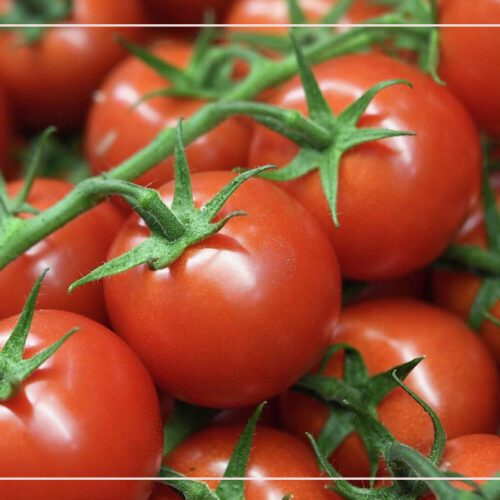
There are many countries that care about agriculture because of its numerous and important benefits, as it is distinguished by its ability to maintain a healthy body while providing important vitamins for humans.
In addition to being the primary element of food in the world, neglecting agriculture by any country will lead to many problems.
Some of the problems that have been solved through providing agriculture in countries include:
- Elimination of extreme poverty in most countries due to providing significant work for all young people.
- Provision of basic food in most countries such as potatoes, tomatoes, cucumbers, lemons, and others.
- Agriculture is considered the most important element for industries; without agriculture, cotton and textiles cannot be provided.
- Animal development: animals feed on plants so it is necessary to focus on agriculture.
- It also increases communication between countries, which improves the economic situation due to imports and exports.
- Improvement in policy due to forcing interaction between countries regarding imports.
Potato cultivation
Potatoes have become an integral part of many cuisines around the world and are considered the fourth largest food crop in the world after rice, wheat, and corn.
One of the most important crops were provided in all countries around the world is potatoes due to their importance and numerous nutritional benefits including:
- Potatoes are a primary source of vitamin C and important carbohydrates for skin and body.
- Potatoes are suitable for diets because they improve digestion and maintain digestive health due to their fiber content.
- Potatoes enhance immunity, skin health, and tissue in the body as they contain high levels of vitamin C.
- They can also promote eye health and vision because they contain good levels of vitamin A.
- They regulate blood sugar levels.
- Sweet potatoes have been classified as one of the low glycemic index vegetables.
How to grow potatoes
There are many ways and places through which potatoes can be planted, including:
- Store potato seeds in the refrigerator for up to a month before planting.
- You can plant whole potato tubers, or cut them into medium-sized egg-sized pieces, with a sprout or three sprouts.
- Two or three weeks before planting, place the potato seeds in a bright place at 65 to 70 degrees Fahrenheit.
- Cut whole potatoes into pieces with a sharp knife two days before planting.
- The pieces should be left to dry for one to two days at 75 degrees Fahrenheit.
- Plant the potato tubers in a hole 7.5-10 cm deep and cover them with 2 inches of soil.
- Plant the potato pieces cut side down.
- If you prefer not to dig, or if the soil is heavy clay or wet, you can place the tubers on the soil surface.
Potato planting time
Determining the timing of potato planting primarily depends on the weather conditions. Potatoes require a cool growing season but free from frost. In cold northern regions, potatoes grow during the summer, while in southern regions they grow in fall, winter, and spring during hot summers.
It is important to know the best time for planting potatoes such as:
- Spring crops must be planted from mid-January in coastal and warm areas until mid-February for inland areas. It is usually harvested from June to the end of August depending on the farming area.
- Summer crops, planted from mid-March to mid-April in cold highland areas and mature at the beginning of September and October.
- Autumn crops must be planted from mid-July to mid-August in inland areas and mature from November until March of the following year. At this time, there is demand for potato products in European markets, providing an opportunity for export.
Potato cultivation
Potatoes are the primary food source for most countries, so all countries are interested in their cultivation and try to provide all the necessary services for their cultivation, including:
- Special fertilizers are provided to supply the appropriate vitamins and nutrition and attempt to enrich the soil.
- Governments provide sufficient water for farmers to encourage them to cultivate potatoes.
- Efforts are made to provide special insecticides that must be sprayed in order to avoid potato-specific diseases.
- You can grow potatoes in large fields in the summer, with the possibility of growing them in winter within plastic houses under suitable conditions.
- Summer potatoes can be frozen to save them for the winter season.
- Potatoes can be grown at home in small fields or small gardens. Potatoes can be planted through seeds or seedlings.
Duration of potato cultivation
It is important when considering planting potatoes or any type of vegetables to take care of them and provide all the suitable conditions for their cultivation.
The duration of potato cultivation varies according to many factors, including:
- Varies depending on the type of fruit and the time of planting.
- Depending on the nature of the soil, the type of soil is a fundamental factor in determining the duration of potato cultivation.
- The method of fertilization and the material used, as there are strong fertilizers and very light ones.
- Potatoes usually take from 90 to 120 days to mature.
- The maturity period can be reduced to two months in the case of home cultivation.
- The formation of tubers in potatoes takes from 5 to 7 weeks.
Growing potatoes at home
The method of planting potatoes at home is easy and simple. It is one of the summer plants that like warm temperatures and light soil, and it is considered an important crop in Arab countries due to its high nutritional value. There are many varieties such as Sharbatly, Mabrouka, and Mangawy.
Several steps should be followed for planting potatoes at home, including:
- placing a potato in a cup of water with half submerged in water and the other half in the air.
- The water should be changed daily, and within a week to 10 days. sprouts will form.
- Then, they should be planted directly into the planters.
- They need to be watered daily but moderately because excessive watering can have a negative impact on them.
- Also, try adding fertilizer to the planters.
Planting potatoes in clay ground
Potatoes can be grown in various types of soil, ranging from light sandy soil to relatively heavy clayey soil.
However, they thrive in well-drained and well-ventilated loamy soils that allow for the natural growth of tubers.
It is not recommended to plant potatoes in heavy soils, but, if necessary, it should be done with caution in heavy clay or sandy soils composed of very fine mineral particles and little organic matter, known for their poor drainage.
Some of the key steps to follow when planting potatoes in clayey soil are:
- Breaking up the clayey soil to make it suitable for potatoes by providing it with fertilizer.
- Measuring the acidity of the soil and adjusting it as needed; ideally between 5.5 and 6.0.
- Ensuring effective drainage because clayey soil retains water.
- Avoid farming in wet clay soil as it leads to crop deterioration and exacerbates drainage problems.
- Do not over-till the clay soil with appropriate irrigation.
- Try to harvest potatoes at the right time.





